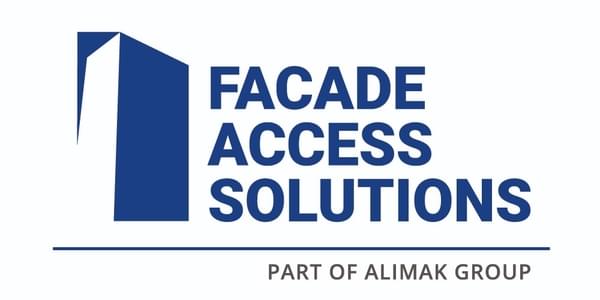
Façade access functionality is one of the main concerns for teams, but it doesn't have to be the only priority. When your architects and contractors are in the design stage of a project, consider environmental friendliness, too. Using sustainable façade materials might make you think you'll have higher up-front costs than you would with traditional options, but there are multiple benefits—including cost effectiveness—that make sustainable façade access solutions an appealing option.
One of the best ways to learn about those benefits and receive sustainable recommendations for your façade access needs is to reach out to our Façade Access North America (NAM) team of Integrated Design Services (IDS) experts. When you include them at your building project's earliest stages, they can deliver custom access systems for your structure that don't compromise on architectural goals, that facilitate successful installation and maintenance operations, that comply with all necessary OSHA and CCOHS regulatory standards, and that are created with minimal environmental impact in mind.
Creating Potential for Architects
Solutions like that call for designing with energy-efficient façade materials (i.e. those that don't require large amounts of carbon emissions to produce, and which are light enough that they don't need too much energy to operate either). However, architects may not always be aware of all energy-efficient materials at their disposal. They might also have concerns about how well sustainable materials will integrate with elements like the curtain wall—will the access system clash with their artistic vision?
If this lack of expertise is causing hesitation or confusion, Façade NAM's IDS experts can offer clarity, spelling out clear benefits that include:
-
Innovation and Differentiation: Embracing energy efficient façade materials can also create opportunities to incorporate them elsewhere in the exterior. As a result, architects have a larger playground to operate in, one where they can integrate bio-based composites like bamboo for texture, kinetic facades made of lightweight fabrications, or green walls with vegetation that are not only beautiful but improve cooling and air quality for their surroundings.
-
LEED Certification Potential: The Leadership in Energy and Environmental Design (LEED) certification is a major ranking system for green buildings, and an attractive designation for potential tenants that want their businesses to be seen as environmentally conscious organizations. Using sustainable façade materials contributes to points necessary for achieving certification, meaning that architects who include them in a project could help raise the building's overall value.
-
Lower Life-Cycle Costs: Architects who opt for sustainable materials do so when they know that these options are, generally speaking, durable and low maintenance. In the long-run, that means using more energy efficient façade materials can equal lower costs for maintenance, repairs, or replacements of materials throughout the structure's lifespan.
Giving Contractors a Boost
To contractors responsible for everything from curtain wall installation to glass maintenance, or even access system repair, façade access functionality is key.
If contractors on your team are nervous about incorporating sustainable materials into the structure's access system, Façade NAM's IDS experts can provide information to build their confidence in the approach. They can also collaborate with your team (including contractors) to integrate sustainable materials that help workers achieve:
-
Easier Material Sourcing: Growing demand for sustainable materials among architects and developers means more availability in the market, resulting in easier work for repair contractors locating them for maintenance throughout a building's life.
-
Improved Health and Safety: With fewer carbon emissions, sustainable façade materials can be potentially less harmful for curtain wall contractors during installation, for example, or for repair during maintenance procedures. When designing with environmentally friendly materials, IDS experts can recommend access systems with considerations like slip resistant surfaces to aid in worker fall protection.
-
Streamlined Operations: From installation to upkeep and repair, using lightweight and modular sustainable materials for façade and access system design can make it easier for contractors to lift, load, place, or remove them as needed. This can lead to potentially reduced project timelines and, consequently, lower overall project costs.
Contact Façade Access NAM for Sustainable Façade Access Solutions
For years, the Façade NAM IDS team of experts has been helping architects, contractors, and more as they have created some of the most iconic structures throughout North America. With our help, buildings receive custom, regulation-compliant solutions, meet façade access functionality needs for installation and maintenance needs, and never compromise on teams' aesthetic visions.
To see these results for your project with an environmentally sustainable approach, contact us today.